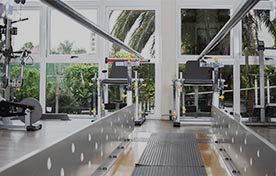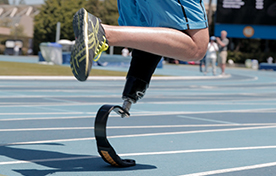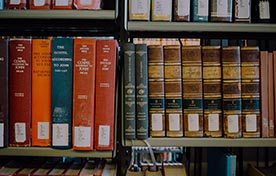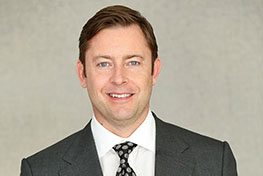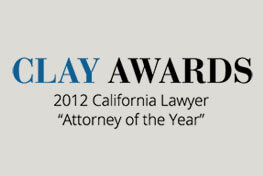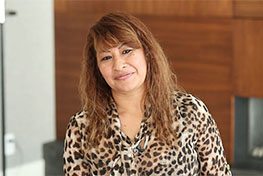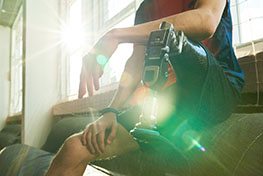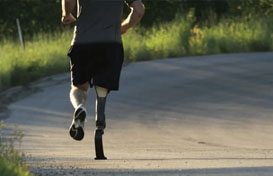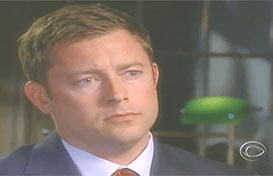A Mother’s Perspective
– by Jennifer Peterson
I cried with joy when the ultrasound technician told me that we would be having a baby girl. A few moments later, I cried again – this time, with grief when I was told that our baby girl would be born missing her right hand and part of her forearm.
I instantly get a little weepy when I think back. Not because the news of Amber’s limb difference was a bad thing. It was just an emotional hurdle that I had to overcome. Not only did I have to cope with my own feelings, but I had to deal with how my husband Cal, our sons, my mother and father, and other family and friends felt about it.
This was our fourth baby, and since we had three boys, we could not help wishing for a girl. We wanted to know the gender of this baby so that we would not have even a moment of disappointment when the baby arrived if I delivered a healthy baby boy. I had a level 3 ultrasound at 19 weeks. Cal had been with me at the ultrasounds for our other children, but he was unable to make it this time, so I was alone when I learned the baby would be a girl. The initial moment of joy was quickly overshadowed by the news of her limb loss.
My first question was, “Does she have an elbow?” When I was reassured that she did, I immediately envisioned Amber wearing a myoelectric prosthesis, which would allow her to function quite “normally” since she had her own elbow. I found myself apologizing to the doctor, nurse and ultrasound tech for crying, and I told them, “It will be just fine. There is great technology out there to help her.” I truly felt that everything would turn out fine, but just thinking about the process of getting to that point was overwhelming.
As I drove home from the ultrasound appointment, I began to wonder why this happened. Was it something I did? Was it something that could have been prevented? How would I tell my family and friends? How would they react? I thought about the baby’s future. What will she be able to do, and what will she not be able to do? Will kids accept her or will they be cruel? Will she marry someday and have a family of her own?
As soon as a couple knows that they are going to have a baby, they begin to incorporate that baby into their lives. They make plans and envision how the future will be for their child. When they learn that the child will be born with a disability, there is an end to that vision of the future and the beginning of another. The new vision isn’t necessarily bad – it just requires adjustment. The difficulty for me was that, not only did I have to cope with my own feelings, I would need to cope with other people’s feelings as well. I also realized that Cal and I would have to help our baby cope with her own feelings and frustrations as she grew up. I was determined to help her build self-confidence at a young age and to be comfortable with her disability so that she can help others be comfortable with the way she was born.
When I initially told my family and friends, I could feel that they didn’t know what to say. This was all new to them, too. Being placed in the role of having to reassure them that everything would be OK was a heavy responsibility, but I think that it was actually helpful for me. It required me to think positively, which helped me to feel more optimistic.
After getting the word out to our family and friends, I made it my mission to learn as much as I possibly could about limb differences and prosthetics. I craved seeing photos of other children with limb differences doing “normal” kid activities, and I needed badly to find other parents who were dealing with the same circumstances that we were experiencing. As the saying goes, “Knowledge is power.” It was true for me. Collecting information was a useful coping mechanism. The more I learned, the better I felt that I could deal with what lay ahead.
I was very fortunate to know someone who had worked for Shriners Hospitals for Children. She recommended that I talk to Todd Anderson, who used to work as a prosthetist at Shriners. I called Todd, and he was absolutely wonderful. He is a lower-extremity amputee, with years of experience in prosthetics and working with upper-limb differences. He listened, answered questions and gave me excellent advice. I don’t think he even knew at the time what an impact he had on me.
I thought about the baby’s future. What will she be able to do, and what will she not be able to do? Will kids accept her or will they be cruel? Will she marry someday and have a family of her own?
Stumbling upon the Helping Hands organization on the Internet was also a huge help. Not only was I able to see many photos of children with upper-limb differences, they helped to connect me with another mother, Elizabeth, in my geographical area who was dealing with a similar situation – her daughter was about 18 months old. She understood how I was feeling and she was very positive, which helped me to be positive too. She told me about a pizza party that would be held at Gillette Children’s Hospital for families with children with upper-limb differences. Our family attended the party when I was still pregnant. It was wonderful to connect with others in a similar situation and to see their children thriving.
We are very thankful that we found out about the limb loss before our baby was born. We were able to network, learn and adjust to the disability ahead of time. When Amber was born, we were able to focus on our beautiful, healthy baby girl instead of zeroing in on her limb difference.
Do You Want to Join the Parent Support Network?
Have you just learned your child was – or will be – born missing part of a limb? Or has your child just had an amputation due to an accident or disease?
No, no one can “fix” this. And no one with genuine support to offer will even try. But it can be an enormous source of relief to talk to someone who’s been there and who knows – firsthand – that it really will be OK. If you’d like to connect with another parent who’s already been through what you’re going through now, call us toll-free at 888/267-5669, e-mail us (npninfo@amputee-coalition.org) or go to our Web site and click on the link under Peer Support to request a peer visit.
Have you already “been there, done that?” Do you want to provide support to another parent who is still absorbing the trauma of a completely altered set of life expectations? In areas where a minimum number of parents can participate in an all-day seminar, we provide training at no charge for Amputee Coalition members. The Parent Peer Visitor training teaches techniques that help a parent refine the skills necessary to provide the ideal support that matches where a parent is in their healing process.
Parents who wish to participate in a Parent Peer Visitor training must no longer be “green,” in the words of Patti Garofalo, president of Helping Hands Foundation, Inc., a support group for parents of children with upper-limb difference. This means that parents who want to become parent peer visitors have healed well enough to completely believe their child has a full life ahead and have confidence that they can help them achieve it. This usually takes at least a year, after passing through all the anniversaries of events that serve as reminders of the painful adjustments that have been needed.
If you feel you are ready to provide support to another parent and can help organize a training in your area or are able to travel to a scheduled training, please e-mail us at npninfo@amputee-coalition.org
Soon after Amber was born, a family support group, Little Fins (named after the Disney character Nemo, the little fish with a small fin), was created in our area. Through this group, we have been able to get together with other families of children with limb differences four times a year. That is invaluable to us as parents and also for Amber. We parents are able to learn from each other and compare notes, and Amber is able to see that there are other children just like her.
Amber is almost 5 years old now, and she is doing very well. She wears her myoelectric prosthesis full-time and functions similarly to “typical” children her age. She also has a violin prosthesis as well as a sports prosthesis for activities that might damage the myoelectric arm (see “The Benefits of Sports Prostheses,” pg. 42). She has many friends, attends preschool and receives occupational therapy through our school district. She is very comfortable with showing others her myoelectric prosthesis and even seems to enjoy the special attention the “robot hand” brings. We are relieved that she is doing so well, but I realize that the worries will continue with each new situation. Each time she meets someone new, I hope that they will react to her positively. I worry about the day when someone makes her feel badly about her disability or when she feels that she can’t do something because of her limb difference. We will meet each new challenge head-on, deal with it, and help her learn how to deal with new situations. She will have to become very good at problem-solving to do things in this two-handed world, and we are determined to help her learn the skills she needs to succeed and be happy in life.
My advice to other parents of children with a limb difference is to reach out to others for advice and help. Learn as much as you can about limb differences and prosthetic options (if you are interested in that route). Be open about your child’s disability – don’t hide it. Encourage your child to talk about and proudly show others his or her limb or prosthesis. If your child is comfortable with his or her disability, then others will be comfortable too. Love and enjoy your child. You will be amazed at what your child will accomplish. Celebrate those accomplishments and do everything you can to develop your child’s self-confidence so that he or she will be able to go out into the world to live independently and happily. Finally, recognize that limb loss involves a process of grieving and that moments of grieving may go on for the rest of your life, as well as your child’s, as each new situation is encountered. Allow yourself these feelings of sadness and find support for those moments of grief to help you cope.
Many people and organizations have helped us to cope with Amber’s limb loss. I have found the Amputee Coalition and its magazine, inMotion, to be very helpful. The staff at Shriners Hospital for Children and Hanger Prosthetics and Orthotics have been great in helping Amber accept and use a prosthesis.
Because of all the people and organizations that have been helpful to us, it is my wish to reach out to others who have just learned that their child has a limb difference. Cal and I would have absolutely loved to receive a visit from someone who knew how we were feeling. It would have been wonderful if someone could have given us information about organizations, Web sites, magazines, doctors, prosthetists and therapists that might be helpful to us. As a result of my desire to help others, I was recently certified by the Amputee Coalition to be a parent peer visitor. Through the Amputee Coalition’s Parent Peer Visitor program, I hope to be able to make some of the unknown be known sooner rather than later for other parents of children with limb differences.
Related Resources
Helping Hands
www.helpinghandsgroup.org
Little Fins
www.littlefins.org
Shriners Hospitals for Children
www.shrinershq.org/Hospitals
For additional information and resources, go to www.amputee-coalition.org/expectations. html
Disclaimer: The following information is provided and owned by the Amputation Coalition of America and was previously published on the website http://www.amputee-coalition.org or the Coalitions Newsletter, inMotion.
